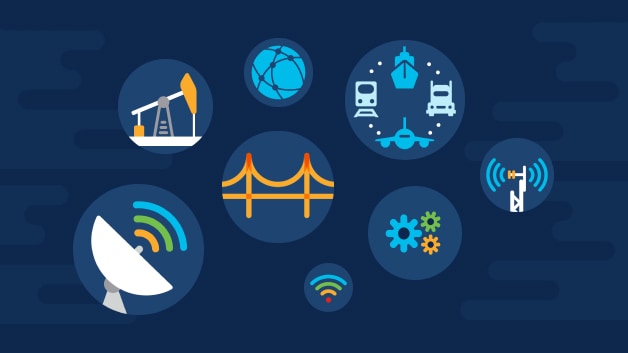What are the key differences between OT and IT?
IT is the technology backbone of any organization. It's necessary for monitoring, managing, and securing core functions such as email, finance, human resources (HR), and other applications in the data center and cloud.
OT is for connecting, monitoring, managing, and securing an organization's industrial operations. Businesses engaged in activities such as manufacturing, mining, oil and gas, utilities, and transportation, among many others, rely heavily on OT. Robots, industrial control systems (ICS), Supervisory control and data acquisition (SCADA) systems, programmable logic controllers (PLCs), and computer numerical control (CNC) are examples of OT.
Operational technology can also be found in warehouses and in outdoor areas such as parking lots and highways. Some such OT examples include ATMs and kiosks, connected buses, trains, and service fleets, weather stations, or a system that allows a city to manage chargers for electric vehicles.
The key difference between IT and OT is that IT is centered on an organization's front-end informational activities, while OT is focused on their back-end production (machines).
What do IT and OT teams focus on?
The IT department is responsible for the informational infrastructure of an enterprise. IT teams focus on maintaining consistent policies and control across the organization. IT is responsible for the protection of sensitive applications and confidential data from unauthorized access.
The OT department is responsible for the equipment on industrial sites. It's focused on production output and worker safety. Because OT performance is key to the company revenues, the team pays particular attention to the uptime and maintenance of machinery.
Contrary to IT, which is mainly focused on making data available, OT is focused on making machines impact the physical world. Machines can also generate data that will need to be archived for monitoring industrial processes and to be processed to help operators make decisions such as predictive maintenance.
What are the characteristics of IT and OT devices?
IT devices are usually off-the-shelf, replaceable, generally have a lifespan of 3-5 years, and are relatively easy to maintain. They typically run on common operating systems like Windows, iOS, and Linux.
OT devices tend to be purpose-built, so they generally have specialized software and may run proprietary protocols. They have a much longer lifetime, as industrial sites are built to operate many years or even decades. OT devices may need to operate 24/7 without failure, as they control critical infrastructures.
Also, OT devices and systems aren't updated as often as IT devices and systems and might have numerous software vulnerabilities. Accessing them may be difficult because they might be installed in remote locations or harsh environments. They may even be controlled by partners or vendors. In all cases, modifications to OT devices may be subject to a complex approvals process as any change (even a simple software update) can have numerous cascading effects on the industrial process.
How do OT and IT networks differ?
OT and IT network infrastructure have similar elements, like switches, routers, and wireless technology. Therefore, OT networks can benefit from the rigor and experience that IT has built over the years with common network management and security controls to build a solid network foundation.
However, there are key differences:
Form factor: OT network devices come in smaller and modularized form factors so they can be mounted in different ways, such as on rails, walls, or light poles, in cars, or even embedded within other equipment.
Hardening: OT network infrastructure may need to be ruggedized when deployed in severe industrial conditions. The infrastructure must be resistant to shock, vibration, water, extreme temperatures, and corrosive air and chemicals.
Network interfaces: Depending on their purpose, OT devices may support networks such as LoraWAN or WiSun to connect industrial IoT (IIoT) devices.
Protocols: OT network devices connect IoT sensors and machines, which run communications protocols that are not commonly used in traditional IT networks. Therefore, industrial networking products must support a wide variety of protocols such as Modbus, Profinet, and Common Industrial Protocol (CIP).
